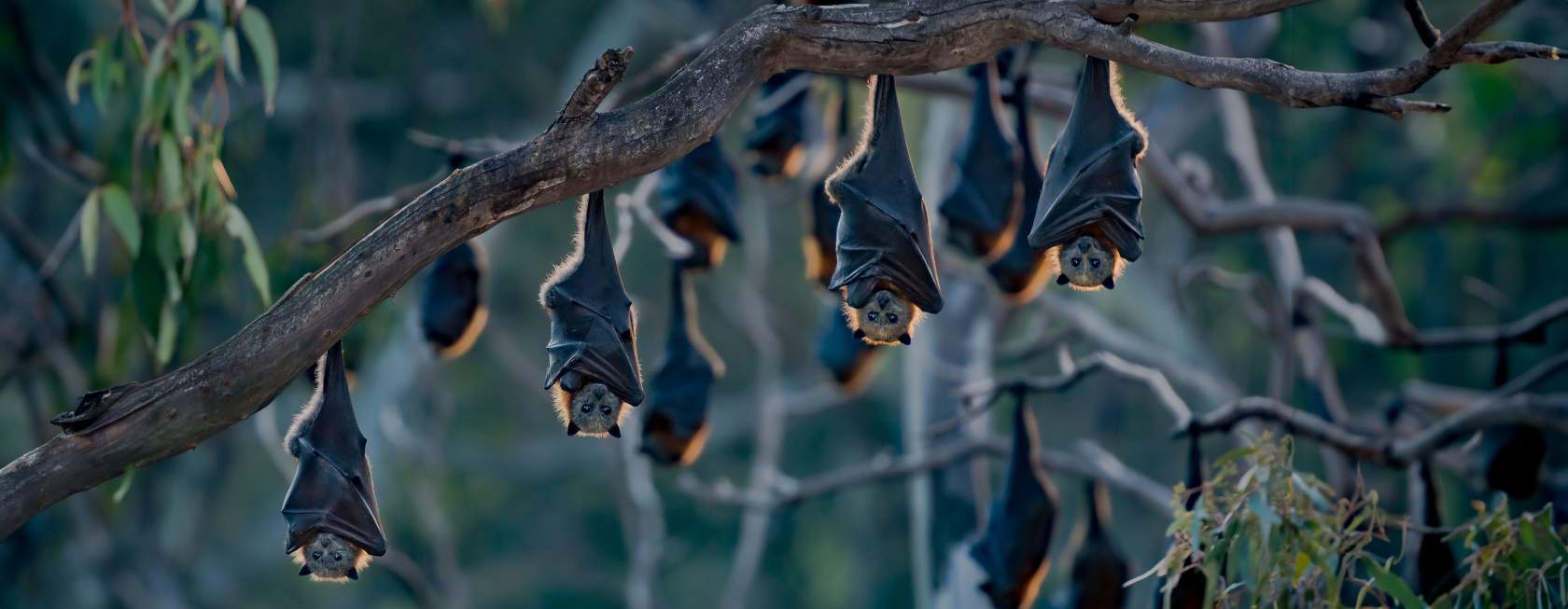
The grey-headed flying fox (Pteropus poliocephalus) is one of four species in the megabat family and is the most common megabat species in Victoria. Grey-headed flying foxes, otherwise known as fruit bats, play an incredibly important role in the health of our ecosystem, helping to pollinate trees and dispersing seeds over great distances. Grey-headed flying foxes are listed as a vulnerable species in Victoria under the Fauna and Flora Guarantee Act.
Appearance
Grey-headed flying foxes are quite distinct in appearance from other bats due to the orange-red fur covering their neck and shoulders. Thick brown-black fur covers the rest of their body. They are one of Australia’s largest bats with a one metre wingspan. Body span ranges from 23 to 28 centimetres in length, with males generally larger in size than females.
Distribution and habitat
At dusk, these bats are a common sight across the Melbourne skyline as they depart from their roosting site at Yarra Bend, travelling tens of kilometres in search of food. In addition to the Yarra Bend colony, there are many other smaller colonies across the state. Some of these locations include Doveton, Geelong, Warrnambool, Bairnsdale, and Mallacoota. Flying foxes also move around and set up temporary camps that may last only a few months, as they follow available food sources.
Diet
The grey-headed flying fox primarily feeds on the fruits, blossoms, and nectar of native trees, including eucalypts, tea-trees, and banksias. Utilising their highly developed sense of smell and keen eyesight, they forage primarily during the night. Additionally, they may consume fruit from introduced species, such as backyard fruit trees (apples, pears, figs, etc.). Wildlife Victoria frequently receives calls related to these bats, and we advocate for strategies that promote coexistence with this unique and ecologically valuable species. Fruit netting causes injury and death to countless bats every year across Australia.
Behaviour
While they are considered nocturnal due to their nightly feeding, grey-headed flying foxes are still relatively active during the day. If you pass by a colony on a walk or hike, you can hear just how chatty and communicative they are during daylight. When it comes to feeding, flying foxes separate individually or into family groups to forage, rather than moving together as a colony. As they are unable to stand upright, flying foxes drink water by flying low over the water source and wetting their chest. They then fly back up into the trees and lick the water from their fur.
Breeding season
Grey-headed flying foxes have a slow breeding cycle. Females give birth to a single offspring each year, typically in early to mid-spring. In Victoria, birthing season is typically between September and November. The newborn pup clings to its mother's fur, under her wing, and nurses for approximately 12 weeks. Following this period, the young bat remains at the roost and is gradually weaned over the subsequent months. Observing a mother with her pup, whether hanging or in flight, is a remarkable experience. However, there are occasions when pups may accidentally fall from their mothers and require assistance. It is critical during breeding season (spring to summer) that deceased bats are reported so they can be checked for live pups that may be hidden under the wing.
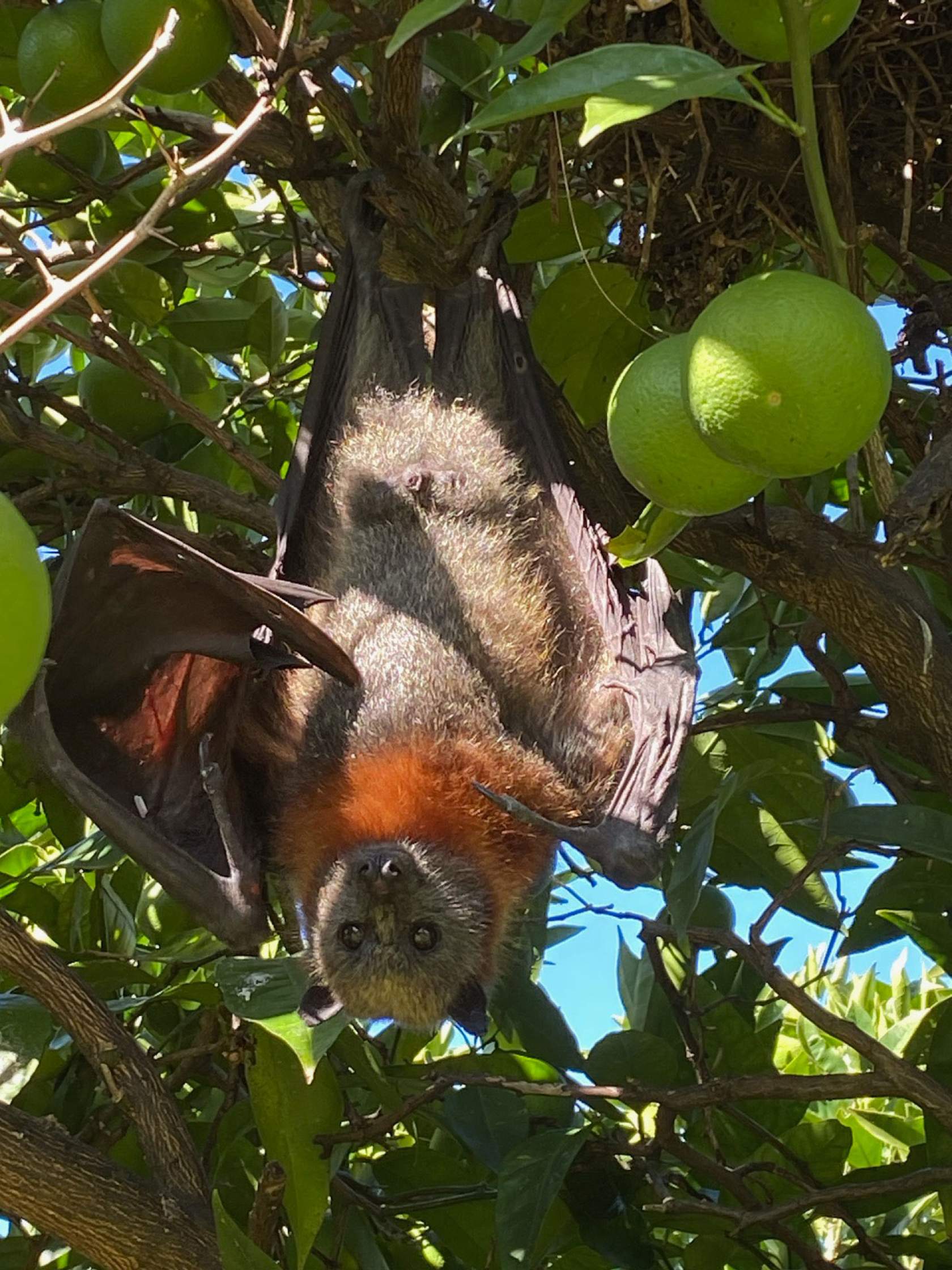
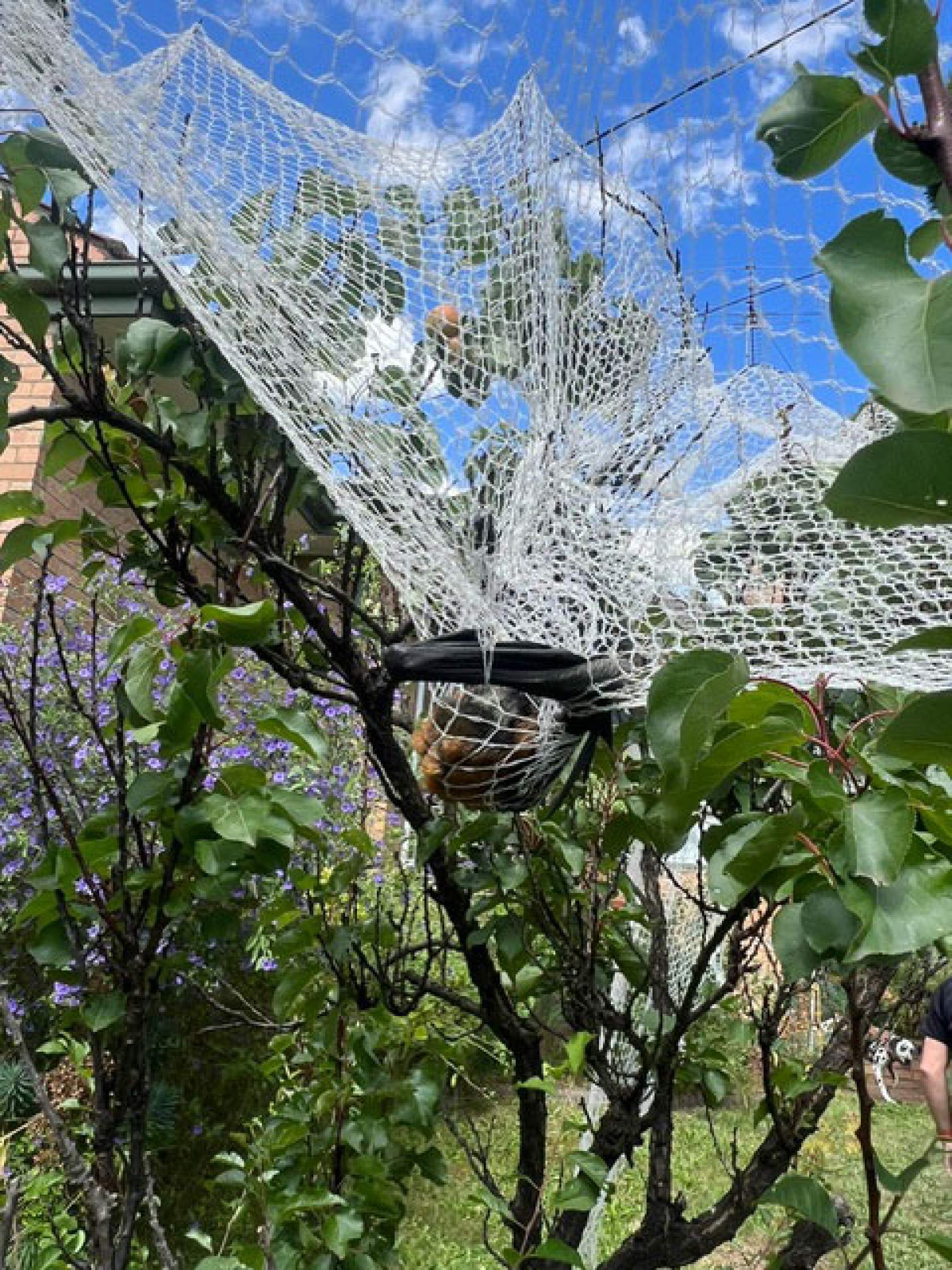
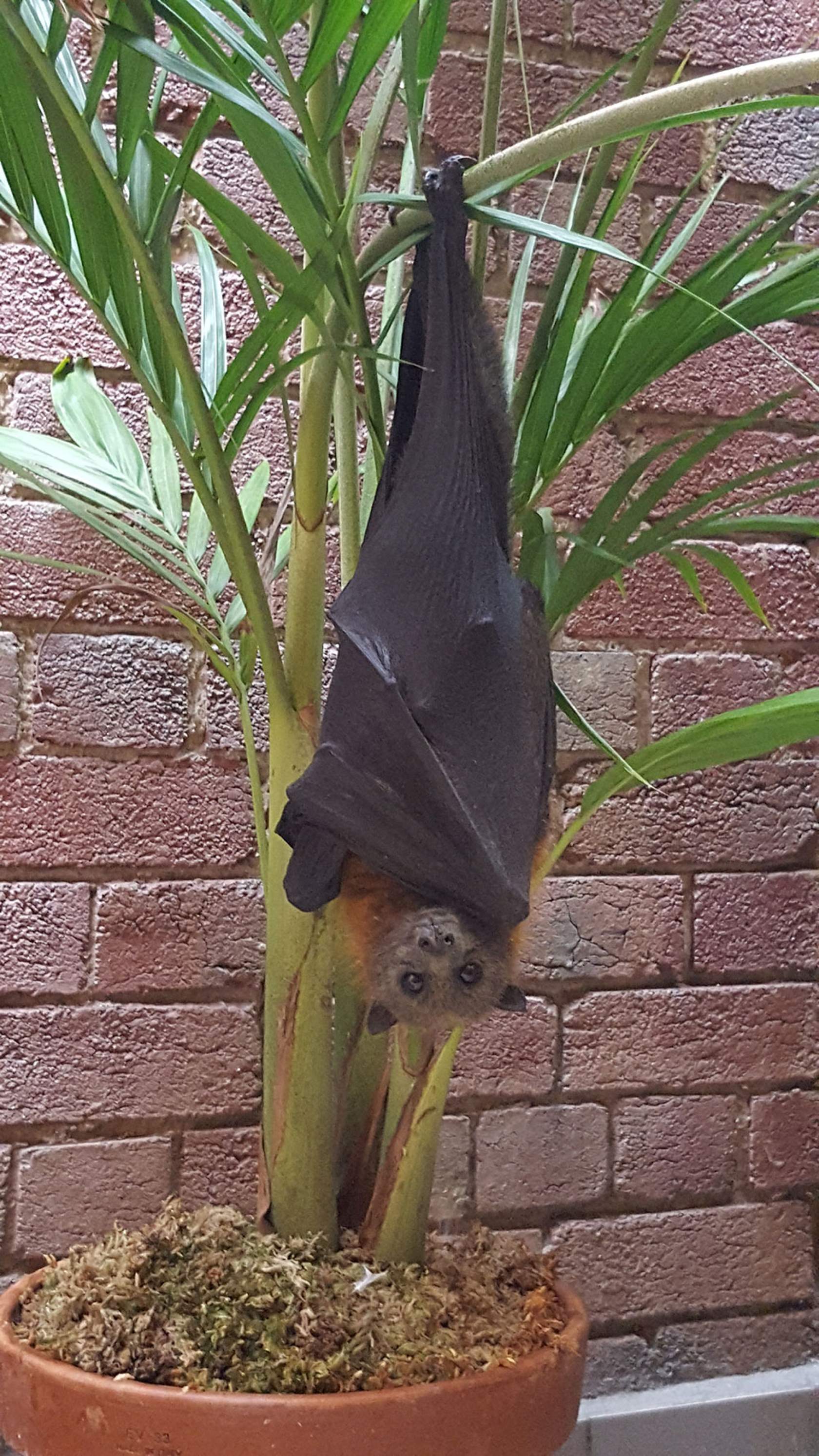
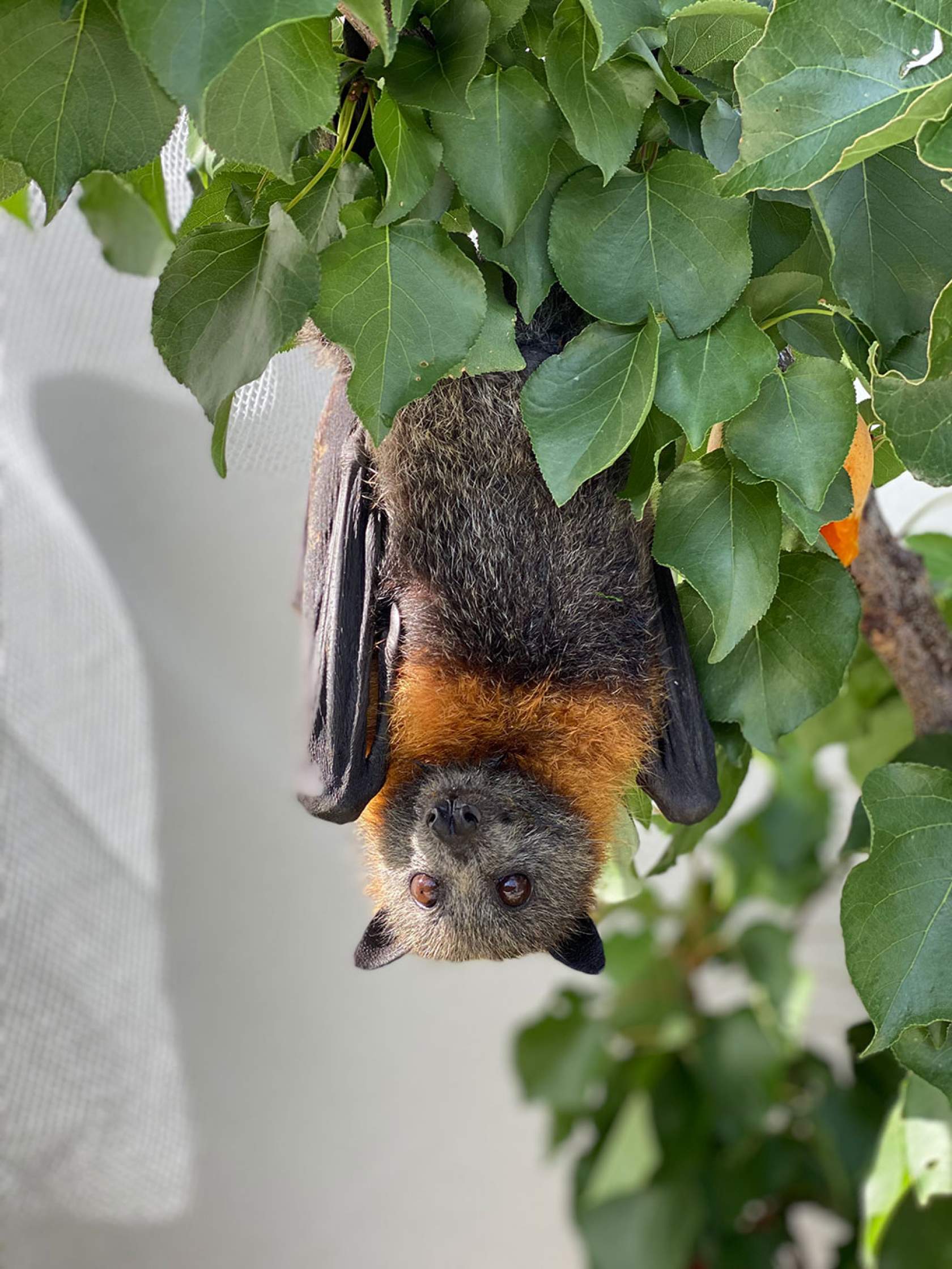
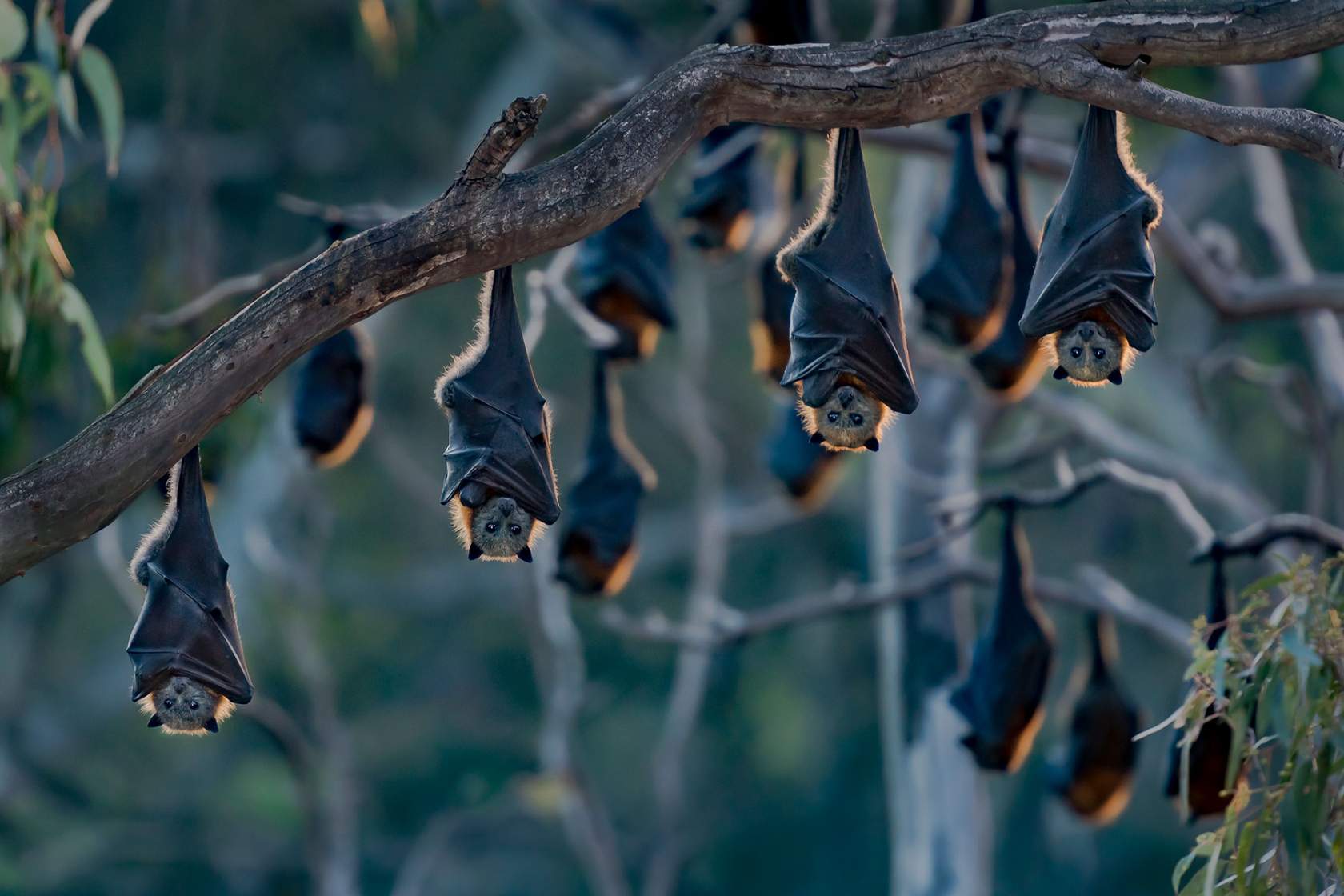
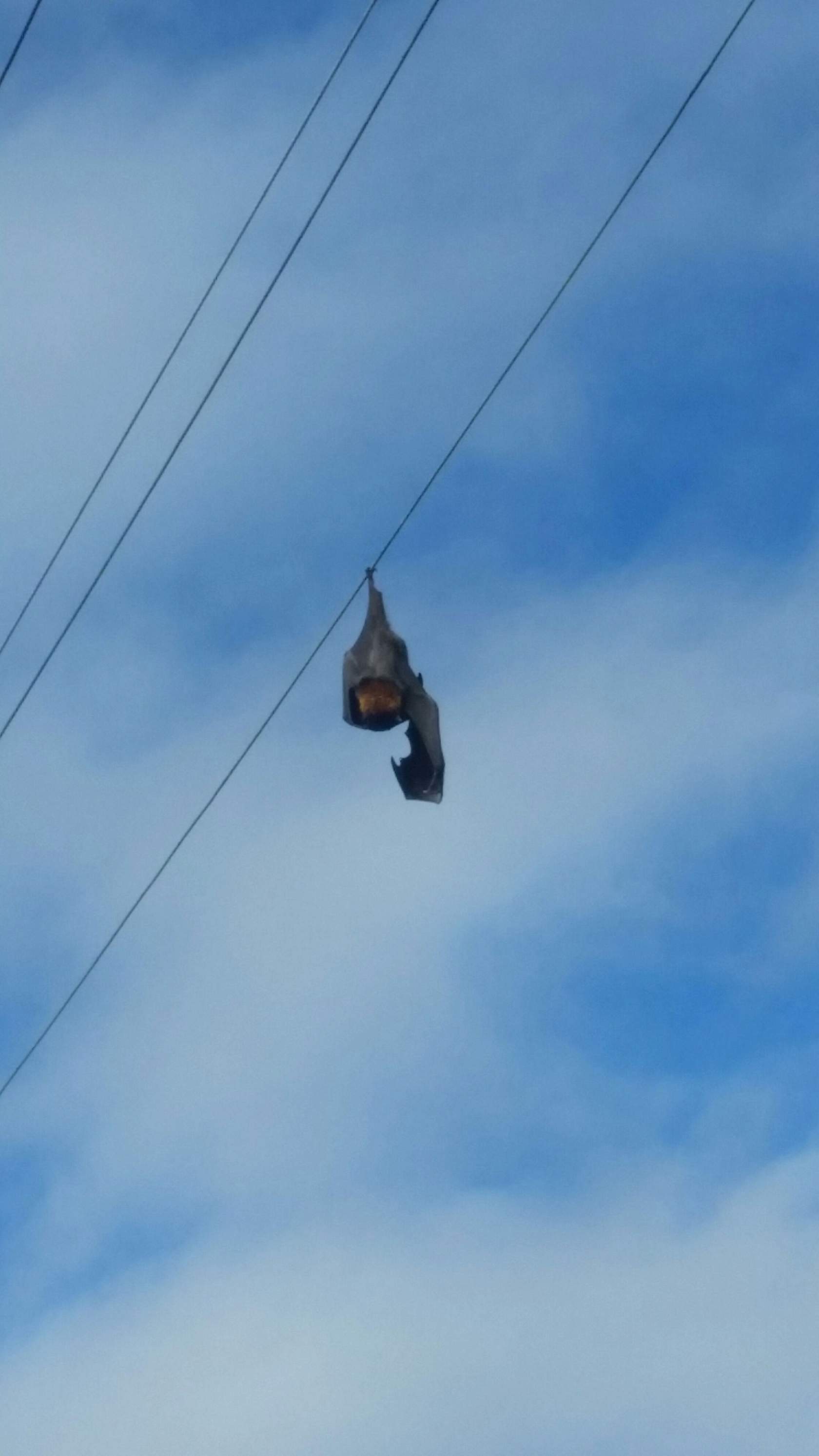
General fun facts
What can you do to help?
The best way to protect yourself is to not handle any bats you may come across. Please call Wildlife Victoria’s Emergency Response service on (03) 8400 7300 if you need assistance with a bat.
If you are bitten or scratched by a bat, you must seek immediate medical assessment by a hospital emergency department for preventative care. Bats have the potential to carry harmful diseases which may be passed to humans if they are bitten or scratched.
A grey-headed flying fox entangled in fruit tree netting is a common report to Wildlife Victoria. Bats caught in netting can suffer serious and often fatal injuries. In 2021, the Victorian law changed for residential fruit tree netting, requiring mesh sizes to be no larger than 5mm x 5mm. However, as a best practice guide, we recommend a mesh diameter less than 2mm x 2mm. Find out more about wildlife safe netting here.
If you find a flying fox that is entangled in fruit netting, do not attempt to handle the bat or cut it free. Call our Emergency Response Service immediately on (03) 8400 7300.
Flying foxes are at risk of electrocution when they land on powerlines or feed in trees close to powerlines. These incidents are often fatal and can have significant impacts on local populations. It is crucial to check for live pups in any injured or deceased flying foxes, which will be tucked away under the wings of female bats.
Please call Wildlife Victoria’s Emergency Response service on (03) 8400 7300 if you encounter a deceased bat or a bat hanging on powerlines.
Flying foxes landing on barbed wire fencing are at significant risk of injury. The barbs can cause severe lacerations to the delicate wing membranes of these bats, which are crucial for flight and overall mobility. Such injuries impair the flying foxes' ability to fly, rendering them unable to forage, escape predators, or navigate their environment effectively. In severe cases, these injuries can result in a slow and painful death.
If you find a flying fox that is entangled in barbed wire, do not attempt to handle the bat or cut it free. Call our Emergency Response Service immediately on (03) 8400 7300.
During summer heat waves, a substantial number of flying foxes succumb to extreme temperatures. Flying foxes become heat stressed in temperatures over 38 degrees, and mass fatalities can occur over 42 degrees. Heat stress can cause dehydration, overheating, and can disrupt the bat's physiological processes, leading to organ failure and, ultimately, death.
In recent years, there has been an increase in starvation events occurring in flying fox populations due to lack of food and resources. This can lead to mothers aborting or abandoning young pups, as well as an increase in emaciated and struggling bats coming into care. Please consider planting wildlife-friendly food trees in your gardens to help support and feed local populations.
Flying foxes pose a minimal risk to human health, however it is important not to handle them. Bats can carry Australian Bat Lyssavirus (ABLV) which is transmissible to humans. The prevalence of ABLV in Victorian bat populations is low, and the likelihood of transmission is minimal. ABLV presents a risk only if an individual is bitten or scratched by an infected bat.
If you are bitten or scratched by a bat, you must seek immediate medical assessment by a hospital emergency department for preventative care. Bats have the potential to carry harmful diseases which may be passed to humans if they are bitten or scratched.
